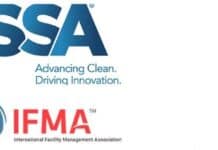By Gabriella Jacobs
Published in the September 2004 issue of Today’s Facility Manager
Jack-of-all-trades. Chief problem solvers. That’s how many facilities professionals describe the expectations placed upon them by their companies. They may have a college degree in mechanical engineering or years of work experience as facility professionals, or maybe they came up through the ranks as an electrician or maintenance technician. But regardless of experience or education on any given day a situation will pop up and challenge the facility manager. It can be unsettling to be responsible for something with only a passing familiarity of the subject.
Examples are plentiful. Someone in upper management wants to build a new plant and it falls to the facility professional to coordinate all details. Someone thinks their flu-like symptoms are the result of killer mold in the ductwork. The parking lot is crumbling. More energy efficiency has to be squeezed out of antiquated equipment. What’s this about a new OSHA regulation? Facility professionals have to keep up–period, end of story.
But how? There aren’t enough hours in the day or dollars in the budget for much more schooling. That’s where a membership in a professional association can come in handy.
Many associations devote themselves to developing benchmarks and standards to ensure acceptable performance in a specific area. They have resources created by experts in academia as well as today’s workplace.
In fact, the American Society for Association Executives, a national organization that serves association professionals, reports on its Web site that “America’s trade, professional, and philanthropic associations are allocating one of every four dollars they spend to member education and training and public information activities–about three times the amount they spend on direct lobbying of government.”
Further, “95% of associations offer education programs for members, making that service the single most common association function. This is followed by convention planning and other convention activities (89%), using Web sites and e-mail to share information with members (81%), and public information activities (79%).”
There are a many associations, so finding the right one to answer field-related questions is a matter of paring down choices. For facility professionals, there are associations with as broad or as narrow a focus as needed.
Take the case of the American Institute of Plant Engineers (AIPE). When the organization was established in 1954, its focus was on the traditional manufacturing plant, and its members were the folks who did whatever was necessary to make sure the plant functioned as needed. This is an example of a fairly specific marketplace.
Over time, as the business sector became more complex, the environments in which facility management was conducted have also evolved. Government regulations have increased. Particular business or service providers have to include highly specific needs for their facilities.
Research by the plant engineers’ institute showed its members’ job titles were changing. By the mid-90s, 28% of its members described themselves as plant engineers while 72% described themselves as facilities engineers or managers. Typical titles were things such as: manager of mechanical services and operations; team leader; director of corporate facilities; occupational risk manager; vice president; and utilities manager.
These are different titles, with essentially the same goal: to optimize functionality of the employer’s physical environment. To remain valid in the future without forsaking its roots, AIPE became the Association for Facilities Engineering. Its niche is now to service all facilities professionals.
The group has kept its flagship credential program–Certified Plant Engineer–but it responded to changing educational demands of its members by adding the Certified Plant Maintenance Manager and Certified Plant Supervisor programs.
Volunteer leaders of the association oversee all those programs to ensure their contents are relevant. The association member/facilities professional is only interested in giving his or her fellow colleagues real information and not outdated advice handed down from old textbooks.
This association’s other features, such as conference session topics, journal articles, and Web site content have adapted to the new times as well. In fact, the emergence of the Web as a business essential has offered AFE and other associations even more ways to give members ongoing training and education. Interested users can log on and find out as much or as little as needed. Recently, AFE’s members exchanged information about far ranging topics. Some of the information gleaned from the site included: that the boiler and chilled water equipment piping were of dissimilar metals because of corrosion; the preferred ratio of square feet per custodian for adequate maintenance of a school; pest control issues; and project management.
Associations can fill in the occupational pieces that might be lacking in other venues. While it has nearly become a 24/7 working world for numerous facility professionals, the associations’ resources are also there to provide assistance whenever the need arises.
Jacobs is communications manager for the Association for Facilities Engineering.





















![[VIDEO] Collect Asset Data at the Speed of Walking a Building](https://facilityexecutive.com/wp-content/uploads/2024/02/maxresdefault-324x160.jpg)